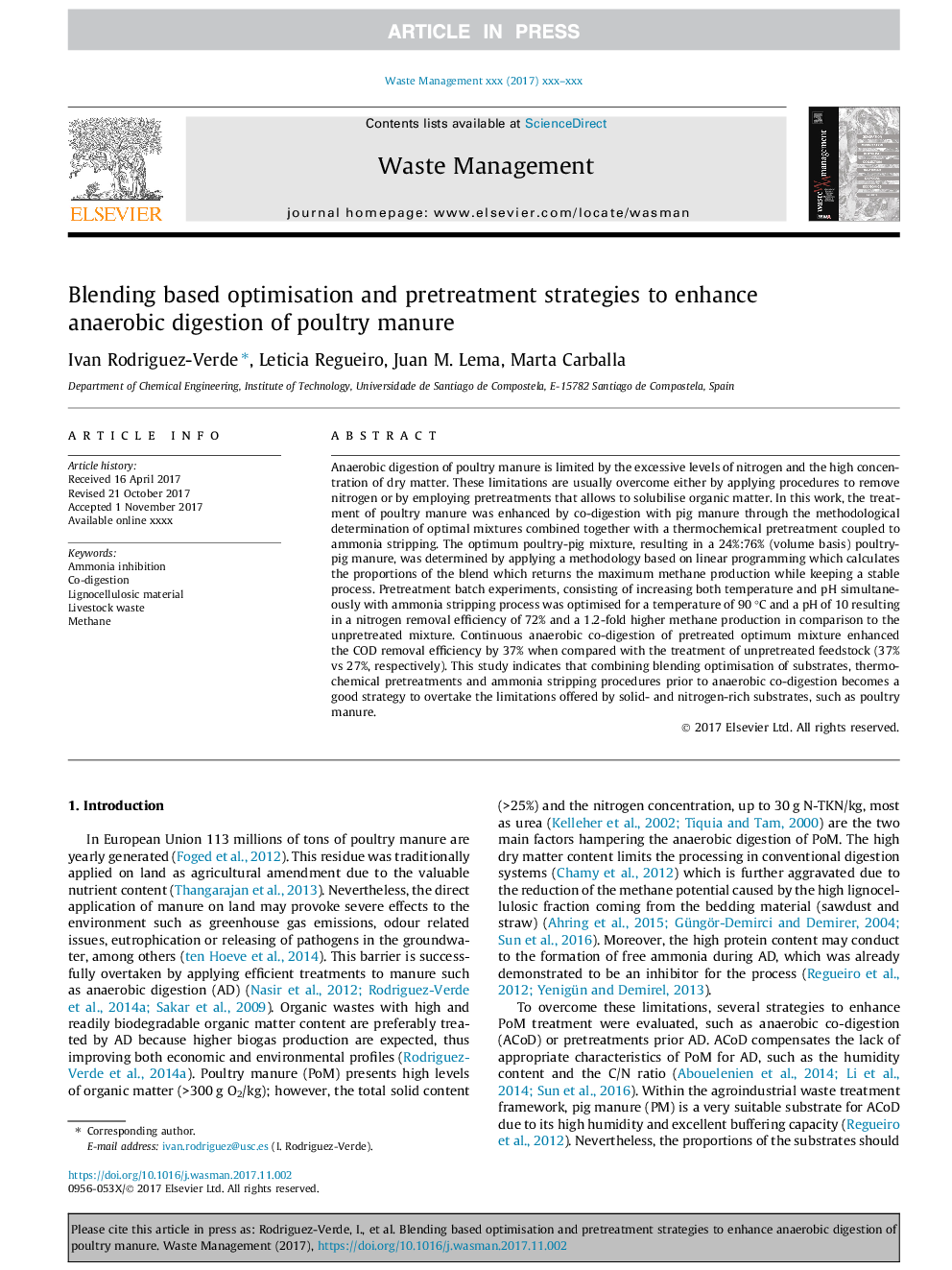| Article ID | Journal | Published Year | Pages | File Type |
|---|---|---|---|---|
| 8870309 | Waste Management | 2018 | 11 Pages |
Abstract
Anaerobic digestion of poultry manure is limited by the excessive levels of nitrogen and the high concentration of dry matter. These limitations are usually overcome either by applying procedures to remove nitrogen or by employing pretreatments that allows to solubilise organic matter. In this work, the treatment of poultry manure was enhanced by co-digestion with pig manure through the methodological determination of optimal mixtures combined together with a thermochemical pretreatment coupled to ammonia stripping. The optimum poultry-pig mixture, resulting in a 24%:76% (volume basis) poultry-pig manure, was determined by applying a methodology based on linear programming which calculates the proportions of the blend which returns the maximum methane production while keeping a stable process. Pretreatment batch experiments, consisting of increasing both temperature and pH simultaneously with ammonia stripping process was optimised for a temperature of 90â¯Â°C and a pH of 10 resulting in a nitrogen removal efficiency of 72% and a 1.2-fold higher methane production in comparison to the unpretreated mixture. Continuous anaerobic co-digestion of pretreated optimum mixture enhanced the COD removal efficiency by 37% when compared with the treatment of unpretreated feedstock (37% vs 27%, respectively). This study indicates that combining blending optimisation of substrates, thermochemical pretreatments and ammonia stripping procedures prior to anaerobic co-digestion becomes a good strategy to overtake the limitations offered by solid- and nitrogen-rich substrates, such as poultry manure.
Related Topics
Physical Sciences and Engineering
Earth and Planetary Sciences
Geotechnical Engineering and Engineering Geology
Authors
Ivan Rodriguez-Verde, Leticia Regueiro, Juan M. Lema, Marta Carballa,
